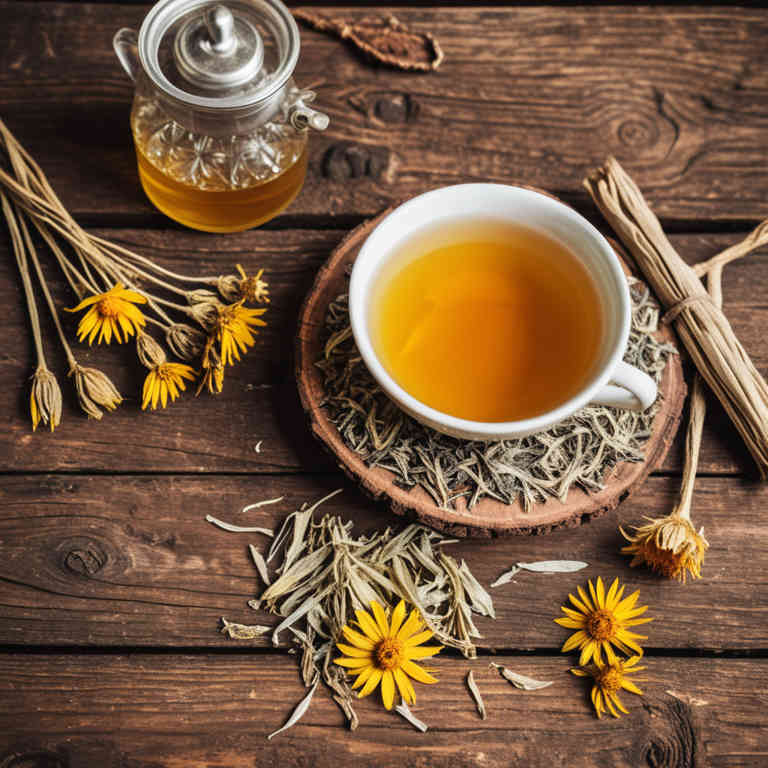Arnica montana tea for medicinal use

Arnica montana tea is a herbal preparation made from the dried flowers of the Arnica montana plant, which is known for its potential therapeutic properties.
It is traditionally used in herbalism to support muscle recovery, reduce inflammation, and alleviate pain, particularly in conditions like bruises or muscle soreness. The tea is often prepared by steeping the dried flowers in hot water, and it is sometimes used externally as a compress or internally in small doses. However, it is important to note that Arnica montana can be toxic if ingested in large amounts, so it should be used with caution and under the guidance of a qualified herbalist.
Its use is most common in external applications rather than as a regular internal tea.
Uses
Arnica montana tea has been used to treat inflammation, pain, and bruising for centuries.
Historically, it was valued by Native American tribes and later by European herbalists for its healing properties. Traditionally, it was applied externally as a poultice or taken internally to reduce swelling and promote circulation. In modern times, it is still used in herbal medicine to alleviate muscle soreness and joint pain.
However, it is important to note that internal use can be toxic, and it should only be taken under professional guidance.
Benefits
Arnica montana tea has health benefits such as reducing inflammation, easing muscle pain, and promoting skin healing.
It is often used to alleviate symptoms of arthritis and other inflammatory conditions. The tea may also support recovery from physical injuries due to its anti-inflammatory properties. However, it should not be consumed internally in large quantities or by pregnant women, as it can be toxic.
Arnica montana tea is typically prepared by steeping dried leaves and flowers in hot water, and it is often used externally as well.
Constituents
Arnica montana tea active constituents include sesquiterpene lactones, flavonoids, and caffeic acid derivatives.
These compounds are known for their anti-inflammatory, analgesic, and antioxidant properties. Arnica montana tea is traditionally used to support muscle recovery, reduce bruising, and alleviate pain associated with injuries or inflammation. It is often recommended for topical application, though some forms may be consumed internally under professional guidance.
However, it should be used cautiously, as it can be toxic if ingested in large quantities.
Preparation
To make Arnica montana tea, start by boiling water in a pot or kettle.
Once the water is boiling, add 1 to 2 teaspoons of dried Arnica montana leaves or flowers to the hot water. Let the mixture steep for 10 to 15 minutes to allow the herbs to release their compounds. Strain the tea into a cup using a fine mesh strainer or cheesecloth to remove the plant material.
Finally, drink the tea warm, optionally adding a small amount of honey or lemon for flavor, though it's best to avoid adding anything that might interfere with its medicinal properties.
Side Effects
Arnica montana tea may lead to gastrointestinal discomfort, including nausea, vomiting, and stomach cramps, especially when consumed in large quantities.
It can also cause allergic reactions in some individuals, such as skin rashes or hives, due to its potent compounds. Prolonged use may result in liver damage, as arnica contains substances that can be toxic to the liver. Additionally, it may interact with certain medications, increasing the risk of adverse effects.
Due to these potential side effects, it is advisable to consult a healthcare professional before using arnica montana tea.